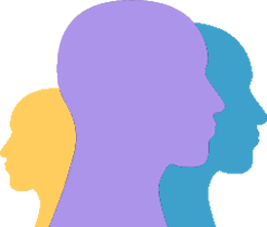Turner Syndrome
Diagnosis is established when a karyotype containing one X chromosome and complete or partial absence of the second sex chromosome, is associated with one or more typical clinical manifestations. The earlier the diagnosis is communicated, the better is the outcome for the girl’s health and self-esteem. The recently published consensus recommendation care for girls and woman with Turner syndrome (2017) described in detail the medical care.
Growth Treatment with growth hormone (GH) is recommended early (around 4–6 years of age, and preferably before 12–13 years). GH therapy should be considered when there is evidence of growth failure e.g., below 50th percentile height velocity observed over 6 months in the absence of other treatable cause of poor growth) or the child is already short or has a strong likelihood of short stature (e.g., short parents and short predicted adult height or already pubertal at the time of diagnosis). Detailed description can be read in the recommendations. Monitoring the safety of growth-promoting therapy is measured by IGF-I. Growth hormone treatment may be concomitant with oxandrolone from the age of 10 years or older if the diagnosis of TS. (the guideline, C H Gravholt et al, 2017).
Puberty and Fertility Estrogen replacement should be considered to start between 11 and 12 years of age increasing to adult dosing. In some instances adding progesterone, is necessary (the guideline, C H Gravholt et al, 2017). The probability to conceive spontaneously is small and decreases rapidly with age. When a pregnancy occurs careful medical guidance is advised (the guideline, C H Gravholt et al, 2017).
Heart In Turner syndrome, there is an increased risk of coarctation of the aorta and bicuspid aortic valve. An infant or child, adolescents and adults should have a cardiac evaluation (with at least an echocardiography) at the time of diagnosis. Considering chromosome abnormalities and bicuspid aortic valve, Turner syndrome the most frequent associated chromosomal abnormality (12/34, 35 %). Therefore once a diagnosis of a bicuspid aortic valve or a left-sided obstructive lesion in a female fetus or child should is diagnosed one should consider evaluating the girl TS.
The transition from pediatric to adult care Any other TS care provider/coordinator should plan implements a transition process in early adolescence for their patients with TS. TS support and advocacy organizations can enhance knowledge and confidence in living with TS and reduce stress and distress and promote the reciprocal sharing of experiences.
Health surveillance for comorbidities throughout the lifespan Audiometric evaluation regardless of the initial age at diagnosis to establish initial hearing threshold levels and regular screening thereafter. Comprehensive ophthalmolo¬gical examination between 12 and 18 months of age or at the time of diagnosis, if at an older age, with emphasis on the early correction of refractive errors. Screening for hypothyroidism at diagnosis and then annually with (free) T4 and TSH measurements beginning in early childhood and throughout the lifespan is advised. Screening of HbA1c with or without fasting plasma glucose starting at the age of 10 years is recommended. Lipid profile is performed in individuals who have at least one risk factor for cardiovascular disease starting at age 18 years. Screening for celiac disease beginning at 2–3 years of age is recommended.. Healthy nutrition and physical activity are important from early childhood. Peripheral oedema mostly resolves by 2 years of age without therapy, any serious compromise of fingernails, toenails or extremity skin at any age be assessed and treated by a professional oedema therapist. Dental/orthodontic evaluation at diagnosis and follow up. Evaluation for scoliosis every 6 months during GH therapy or otherwise annually until growth is completed. For girls with Turner syndrome is important to have a healthy lifestyle. Dietary intake of calcium and vitamin D follow region-specific recommendations. Screening for vitamin D deficiency with a serum 25-hydroxyvitamin D measurement from the age of around 10 and there is recommended. Dual-energy X-ray absorptiometry (DXA) scans should be considered to monitor bone mineral density after adult hormone replacement therapy has been instituted.
Turner Syndrome
Turner syndrome is a disorder that only affects females, about 1 in every 2,000 baby girls. The cause is an abnormal number of the chromosomes...
